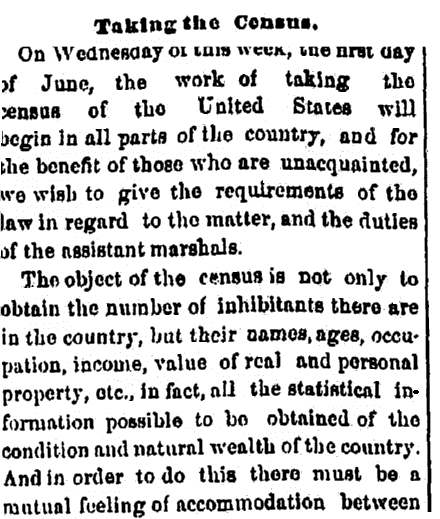Introduction: In this article – part of an ongoing “Introduction to Genealogy” series – Gena Philibert-Ortega explains how the mortality schedule, part of the U.S. census, can provide information about your ancestors who died in the year previous to the enumeration of the decennial census. Gena is a genealogist and author of the book “From the Family Kitchen.”
Have you taken a look at the U.S. census mortality schedule? Like other census schedules, the mortality schedule does not include information about everyone – but for those who have an ancestor who died a year prior to the census enumeration, it can hold valuable clues for your family history research.
Why Mortality Schedules?
Death registration was not consistent throughout the United States until well into the 20th century. If you refer back to our previous article on Death Certificates, you will see that states differed on when they required deaths to be registered. So, when researching a time before mandatory death registration, the mortality schedule can be an important resource.
What’s the benefit of the mortality schedules? Well, for those who find an ancestor, the information in this enumeration can verify a death – plus give additional information like cause of death which can be helpful, especially for those interested in tracking family health history. However, as the blog CSI: Dixie points out, those causes of death may not be precise and can in some cases show biases on the part of the informant.*
However, this May 1870 Michigan newspaper article indicates that a physician was to be consulted to look over the causes of death. It reports:
The assistant marshals are to submit their mortuary report to some physician that he may correct any mistakes that exist in the registering of diseases from which the persons in the schedule died.

While the mortality schedule does have its limitations, for those who have ancestors that died prior to the enumeration of the decennial census, mortality schedules can provide additional information during a time when death certificates are less common. In addition, these schedules are also useful in finding deceased African American ancestors.
The Mortality Schedule
The mortality schedule was taken in 1850, 1860, 1870, and 1880. In addition, the states of Colorado, Florida, Nebraska, New Mexico, North Dakota, and South Dakota conducted a mortality census in 1885.** The mortality schedule of the U.S. census recorded those who had died in the year previous to the enumeration (June of the previous year to May of the census year). Researchers can expect to find the following questions on these enumerations:***
- Name
- Age at last birthday
- Sex
- Race
- Marital status
- Profession, occupation, or trade
- State, territory, or county of birth of person
- Length of resident in county
- Month in which person died
- Disease or cause of death
- Place where disease contracted
- Name of attending physician
At first glance, all of that possible information sounds great – but there are problems with the mortality schedule. The biggest is that not everyone who should have been recorded were.
A good case in point is my 3rd great-grandfather Moses Henry Chatham, who died in November 1879. However, he doesn’t appear in the mortality schedule. There can be all kinds of reasons why some deaths weren’t recorded, including the informant not wanting to disclose the death to the enumerator. The mortality schedule was the third schedule that the enumerator would have gone through, so it’s possible that some information was missed.**** So, never make the assumption that your ancestor wasn’t recently deceased because you can’t find them in the mortality schedule.
Finding the Mortality Schedules
The schedules can be found online on free and subscription websites. FamilySearch has the 1850 schedule index and images. These include people who died between June 1849 and May 1850. Not every state is represented, so consult the FamilySearch Family History Research Wiki page United States Census, Mortality Schedules, 1850 for more information.
Also consult the website Mortality Schedules for transcribed mortality schedules.
————————
* “The Mortality Census,” CSI: Dixie (https://csidixie.org/numbers/mortality-census: accessed 7 June 2017).
** “Mortality Schedules,” United States Census Bureau (https://www.census.gov/history/pdf/mortality.pdf: accessed 87 June 2017).
*** “Mortality Schedules,” United States Census Bureau (https://www.census.gov/history/www/genealogy/other_resources/mortality_schedules.html: accessed 7 June 2017).
**** “The Mortality Census,” CSI: Dixie (https://csidixie.org/numbers/mortality-census: accessed 7 June 2017).
Related Articles:
